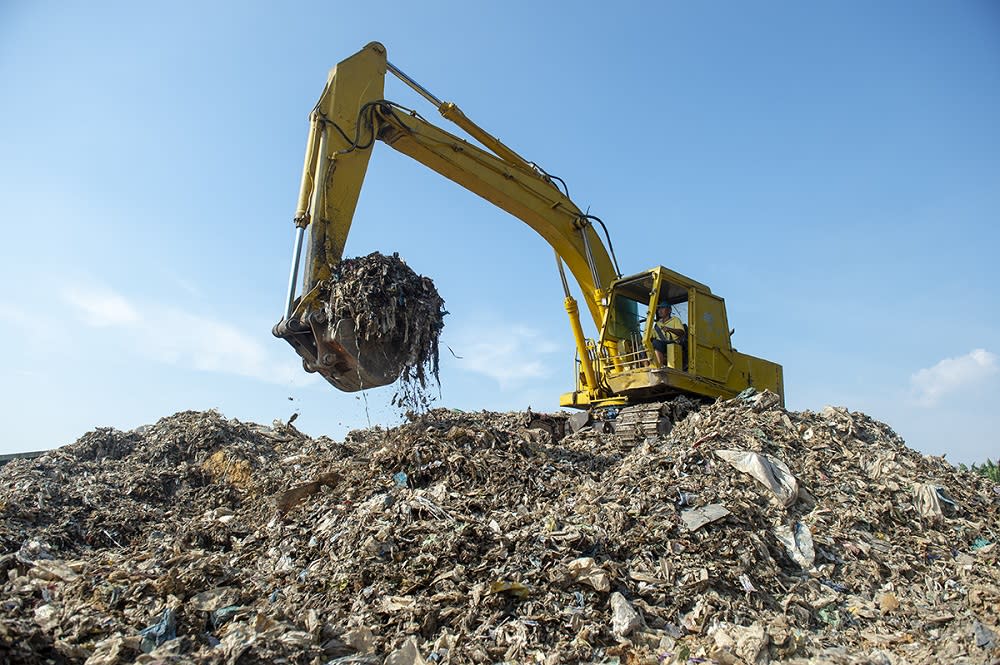How do we get rid of plastic waste without that toxic taste? This engineer has the answer

IPOH, August 22 — An environmental engineering expert has suggested that the government consider the “fast pyrolysis” technology as a disposal method for the country’s plastic waste.
Environmental engineer Frank Wilson, who has 40 years experience in water and waste treatment, said “fast pyrolysis” technology does not emit any hazardous toxins such as dioxin, which can be found in other technologies which involve incineration.
“Unlike the technologies which involve incineration that requires oxygen to burn and produce dioxin, fast pyrolysis does not involve any burning as it is the process of heating organic matter in the absence of oxygen and making it decompose to produce flue gas, liquid oil, diesel and biochar (fertiliser),” he told Malay Mail.
“Normal pyrolysis operates at 450 degrees Celsius, but fast pyrolysis operates at the temperature of 950 degrees Celsius. At this temperature, all organics vaporise and virtually no ash is formed.
“The condensed gases include naphtha and high-quality diesel,” he added.
His comments follow an announcement by the government recently that they are looking at turning plastic trash in the country into alternative fuel and source for producing cement.
Wilson said that technology also produces less flue gas compared to direct combustion in the way of incineration.
He added that said once the pyrolysis process begins no external heating is required and the remaining gas can be used to produce electricity and sold to the grid.
“Pyrolysis is carried out under the condition of hypoxia (no oxygen), so there are fewer acidic gases such as nitrogen oxide (NOX), sulfur oxide (SOX), hydrogen chloride (HCI) and other public hazard generating.
“The resulting gas or oil can be burned at a low air ratio with less exhaust gas and pollution. Thus, it is a safe method of disposing of waste and at the same time produce valuable energy,” he said.
Wilson said that incineration cannot be considered as a ‘green’ process as the end product of incineration comprises mainly carbon dioxide, water and possibly dioxins.
“Dioxin is a highly toxic compound which may cause cancer and neurological damage, and disrupt reproductive systems, thyroid systems and respiratory systems.
“Agent Orange as used by the United States in the Vietnam War in the 1970s was dioxin and the ground is still contaminated today some 40 years later and there are continuing health problems. Deformed children are still being born and cancers are prevalent,” Wilson explained.
“In Malaysia, most hospitals have an onsite incinerator to burn clinical waste and they are not aware that dioxins are being formed which can affect hospital patients. This should be banned,” he added.
Wilson noted that neighbouring country Singapore uses incineration, but he said they go to great lengths to prevent dioxin from entering the atmosphere.
“These techniques are expensive and have a high maintenance demand,” he added.
Last month, Housing and Local Government Minister Zuraida Kamaruddin had said that the government is looking into the possibility of turning plastic trash in the country into alternative fuel and source for producing cement.
Zuraida said the ministry was looking at the co-processing in cement kilns technology used by ResourceCo Asia (M) Sdn Bhd in Chemor, which processes local plastic waste into an alternative fuel known as processed engineered fuel (PEF).
The minister also said they received another suggestion from a local company called Paramai Sdn Bhd, which uses “pyrolysis plasma” technology to dispose of plastic junk.
However, Sahabat Alam Malaysia (SAM) president Meenakshi Raman opposed the technologies as she said that burning waste in any form has adverse effects.
In response, both the ResourceCo Asia (M) Sdn Bhd and Paramai Sdn Bhd insisted that their co-processing in cement kilns and “pyrolysis plasma” technologies do not emit hazardous gasses or toxins.
ResourceCo Asia managing director Pavel Cech said the cement kiln his firm uses to convert plastic waste into an alternative fuel called PEF was built to not release harmful emissions.
Pavel said that the co-processing of plastic waste with raw material not only extracts the energy potential in the discards but also unlocks mineral content from the inputs.
While, Pamarai Sdn Bhd executive director Pang Swee Lei said his firm used a plasma gasification machine dubbed the Asher, which he argued was the best and most realistic solution for plastic waste issues and landfill diversion.
Pang said that the Asher delivers clean, green and zero pollution operation and it is a closed-loop system without generating any secondary contamination.
Both Pavel and Pang then said they were willing to engage with environmental groups to explain their technologies.
Related Articles Rethinking the ‘buy and throw lah’ mindset ― Claire Lim Yu Li Selangor shuts down six illegal plastic recyclers in Ijok, but health hazards remain Flip-flops to building blocks: Ivory Coast uses plastic waste to build classrooms



